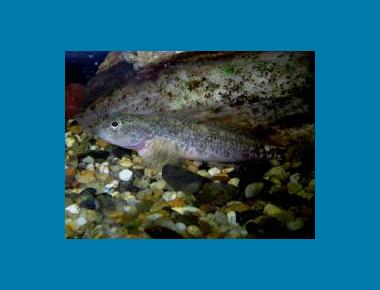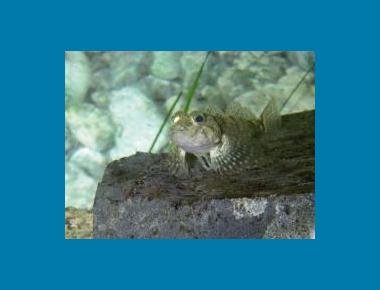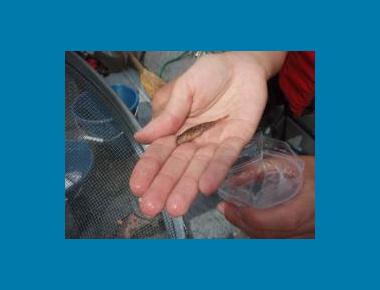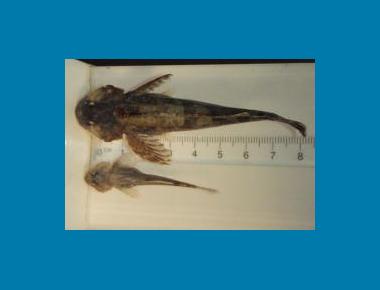Facilitating the protection and restoration of species and ecosystems at risk on BC’s South Coast
Cultus Pygmy Sculpin | "Dwarf" Coastrange Sculpin
Cottus sp. 2
Length 2.9-4.5 cm (maximum 5 cm). As with other sculpin species, Cultus Pygmy Sculpin have a large flat head, large fan-like pectoral fins, and a tapering body with small pelvic fins. The anal and dorsal fins are long, the segmented dorsal fin rays (cartilaginous, or bony, dermal rods which form the skeleton of the fins), along the back becoming erect when the fish is excited or stressed. Colouration is subtle, with the dorsal area being brown to grey, lightening to a white ventral area. Larvae and juveniles lack pigmentation on the fins, which become barred as the fish matures. Some enhanced colouration occurs during spawning, with males having an orange band on the first dorsal fin. Both sexes have 1-3 dark saddle-like blotches below the second dorsal fin. Sculpin lack a swim bladder which prevents them from rising vertically in the water column as other fish species can. This tends to restrict them to a benthic existence where their flat heads, streamlined bodies and broad pelvic fins allow for them to remain stationary in the streambeds of the often fast flowing waters they inhabit. The pygmy lake form however has evolved a number of adaptive features to an open water existence including lower bone density, high levels of subsurface fat to provide buoyancy and enlarged sensory pores on the head to assist in sensing the location of prey. These adaptations allow the pygmy lake form to pursue plankton food sources throughout the water column of the deeper, open waters of Cultus Lake.
Download Species Fact Sheet in PDF
Status
RESOURCES
A joint venture resource providing comprehensive information on a range of species and ecological communities specific to the Coast Region of BC (including the South, Central and North Coast, Vancouver Island and Haida Gwaii).











